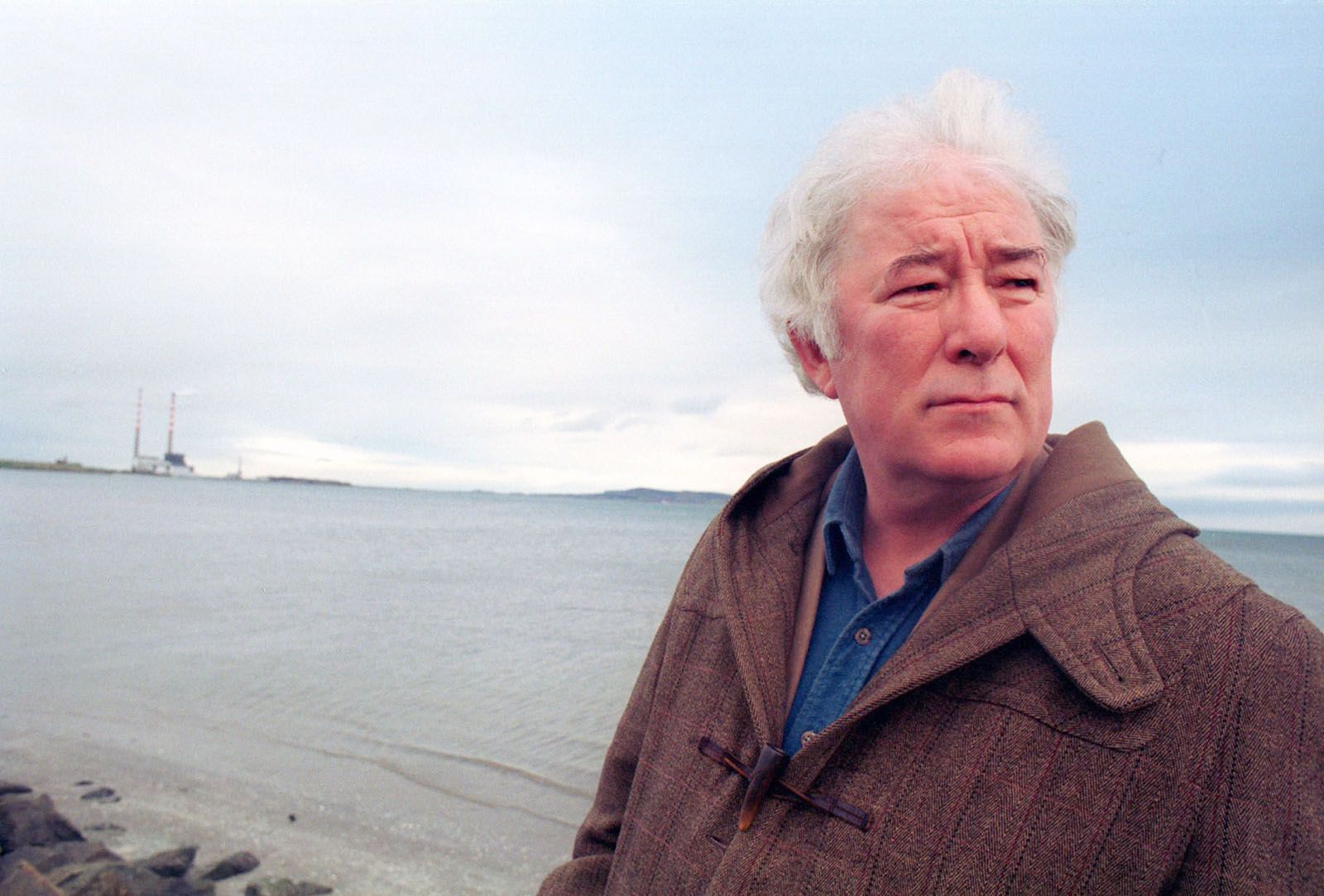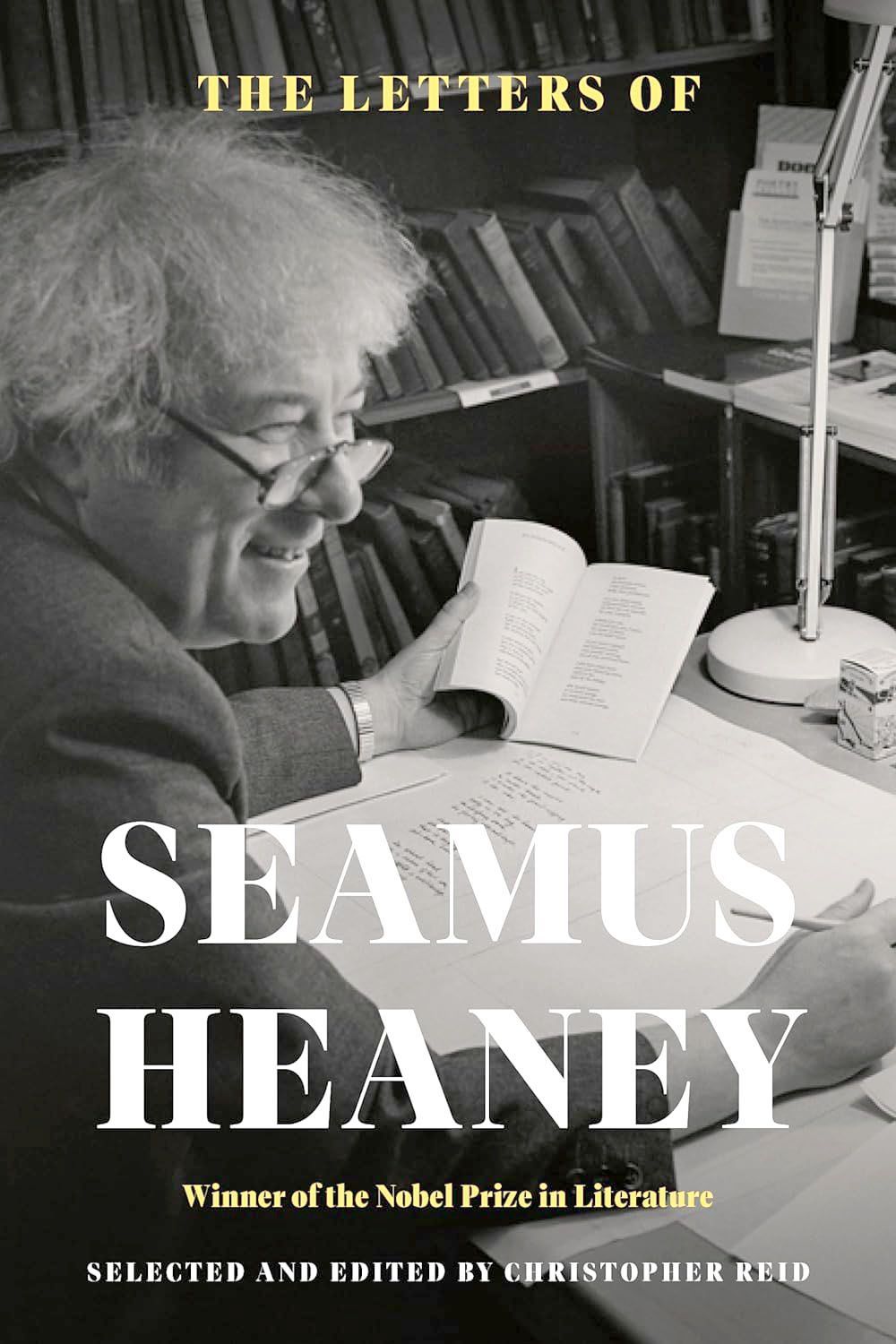The first entry in the new 820-page edition of "The Letters of Seamus Heaney" is a missive to his longtime friend, novelist Seamus Deane, dated December 9, 1964.
The final item is a text message that Heaney sent to his wife, Marie, nearly five decades later, on August 13, 2013, the day he died en route to a hospital for emergency surgery on a ruptured artery.
It consists of two words: Noli timere. An injunction, in Latin, not to be afraid. What falls between these two epistles is a collection so large and varied that it places Heaney right up beside the horror author H.P. Lovecraft as one of the most diligent epistolary writers of any age.
No doubt there are plenty of people out there who penned more letters, but to come upon so many with literary quality is rare indeed.
None of us can know whether the content of that 2013 message to his wife was spontaneous or whether he had always known what his final words would be. Yet a reading of this volume leaves no doubt that Heaney followed the principle of noli timere throughout his life and career, not caring if he offended either the powers that be in Northern Ireland, or readers who might have wanted more political engagement on his part.
This seeming contradiction needs explaining. One of the most revealing entries in the book is a letter from Heaney to the poet Brendan Hamill dated January 8, 1973. Any historically literate reader will have already picked up on a sociopolitical context here.
The date is almost exactly a year after the January 30, 1972, massacre of 13 civilians known as Bloody Sunday, for which no British soldier or officer has ever faced prosecution.
Seamus Heaney pictured in Dublin in 1995. Photo by Eamonn Farrell RollingNews.ie.
“I think the poets generally have evaded ‘hard’ comments on the Derry massacre, but I don’t think they have been ‘evasive about the NI crisis.’ I can speak best for myself and I’ve no doubt the others will do this also,” Heaney writes.
Heaney goes on to tell Hamill that in his first two books of poems, he took pains to write about Ulster as a part of the Irish experience, not the British one. Here was a pro-independence stance, however seamlessly integrated into an aesthetic form.
These early pieces were not free from references to The Troubles, Heaney maintains. His poem “Docker,” he tells Hamill, “did insist on the submerged violence,” while another, “Requiem for the Croppies,” offered “an image of resistance resurrecting itself.”
Hence, in Heaney’s judgment, he helped subvert, from the earliest days of his career, the idea of Ulster as a province of the United Kingdom, and to remind readers how inescapable certain topics are for poets and writers who came of age during times of tension and conflict.
Having said this, Heaney admits that “I was not, however, very politically conscious as a poet” (emphasis in original) and that the British genius Ted Hughes had just as much of an influence on him as Patrick Kavanagh.
Heaney is a cosmopolitan man of letters, drawing on examples from different cultural contexts, admiring the élan of their work without regard for whether or not they inform his resistance to Unionism.
He goes on to offer a stark warning about “the difficulty of moral confusion,” the dangers of unchecked revolutionary zeal. A partisan identity results inevitably from having grown up and received one’s education in the north, he concedes.
“Yet an intense fidelity to one’s own tribe can only lead to a continuous cycle of revenge.” Reading that passage, this writer thought of a successful Irish mystery/thriller author I once had the chance to interview.
I asked him whether, by chance, he frequented a then-popular Irish-themed bar in the Murray Hill section of Manhattan. He said he did not.
The reason? He had noticed a sign behind the bar with the slogan “Sniper at Work,” and people in the bar seemed to find nothing wrong at all, morally, with that message. Given the history of IRA bombings and deaths of civilians that followed, Heaney’s warning, in January 1973, of a continuous cycle of revenge is nothing less than prescient.
The letters present a Heaney who is politically engaged but not ideological, a man of convictions who is no slave to any doctrine or dogma. Some may not like it, but in much of the rest of this volume, he comes across like Ezra Pound’s Hugh Selwyn Mauberley, “unaffected by the ‘march of events," wandering far and wide in realms of pure aesthetics, exchanging ideas with and drawing inspiration from writers, poets, and critics as diverse as Seamus Deane, Ted Hughes, Carol Hughes, Robert Pinsky, Vona Groarke, Donald Davie, Paul Muldoon, Derek Mahon, Tom Paulin, James Simmons, the late Edna O’Brien, and the late Helen Vendler.
In a letter dated December 8, 2012, Heaney shares with O’Brien his reactions to the verbal lushness in her memoir "Country Girl." “For me the book, in its early Irish stages, was total immersion, recognition and amplification, page after page of sheer language joy, image-flowering,” he states, before thanking her for including such “old friends” as the composer Neil Martin and the actor Stephen Rea.
In a missive of November 29, 2009, to the cork poet Greg Delanty, Heaney voices his respect for the seriousness with which Delanty has undertaken explorations of Greece, and Athens in particular, as manifested in his "The Greek Anthology Book XVII." Delanty’s “familiarity with the classical ground” informs the work, Heaney states.
It “deepens the imaginative purchase” of the author’s invention of short lyrics by Athenians who never in fact existed, including one by the name of “Heanius.” In all, Heaney finds in the anthology an affirmation of Patrick Kavanagh’s “conviction about the strength of the comic vision.”
With his nuanced view of partisanship and his intellectual curiosity, Heaney found in travel a catalyst to the imagination and a means to evade the rigidities of thought that fierce devotion to a cause entails. As certain of the entries make clear, few places held as much interest for him as New York City.
In a letter of September 29, 2000, he apologizes to Williams Cole, the son of the late publisher and verse writer William Rossa Cole, for not being able to make it to the city to attend the latter’s memorial service on the following day.
Heaney then recalls the welcome he received from the senior Cole on his first visit to the city back in 1969, when his host received him in an apartment packed with books on West 54th Street.
Heaney’s appreciation of travel in no way entailed a lowering of his critical standards, even on trips he enjoyed. In a letter to Tom Paulin on October 9, 1994, he relates the experience of taking part in the Tasmania Poetry Festival in the town of Launceston.
Unfortunately, a bulk of the work that people read is the spoken-word variety. Many of the readings are “slams.” Heaney is blunt about how awful he finds much of it to be.
But the rest of his Australian trip, including stops and stays with friends in Melbourne, Brisbane, and Sydney, is a success. He does regret that he does not get a chance to stop off at the Port Arthur penal settlement he read about in Robert Hughes’s "The Fatal Shore."
Too bad Heaney does not elaborate on his reasons for wanting to go there. Just maybe, for all his wariness about extreme nationalism, he feels the stirrings of kinship with the ghosts of those the British jailed and treated horribly on the opposite side of the world from his homeland.
We can only imagine. Heaney sets down his thoughts and impressions, indifferent to whether others will receive them with approval or dismay. Noli timere.
The Letters of Seamus Heaney, edited by Christopher Reid, is published by Farrar, Straus and Giroux. 848 pages, $41.85. Michael Washburn is a Brooklyn-based writer and journalist and the author of five short story collections. His story “Confessions of a Spook” won Causeway Lit’s 2018 fiction contest, and another of his tales, “In the Flyover State,” was named a Distinguished Mystery Story of 2014 by Best American Mystery Stories.








